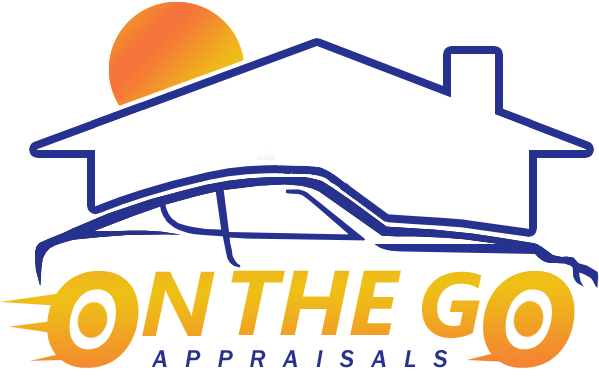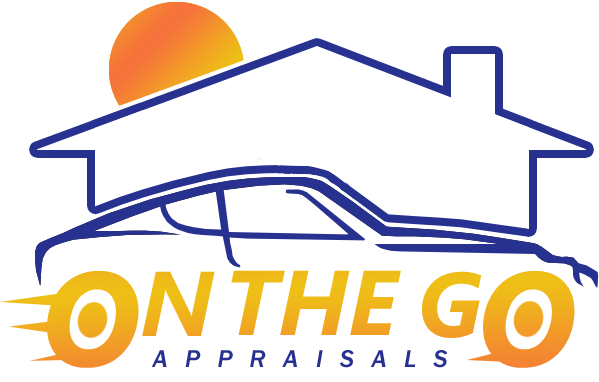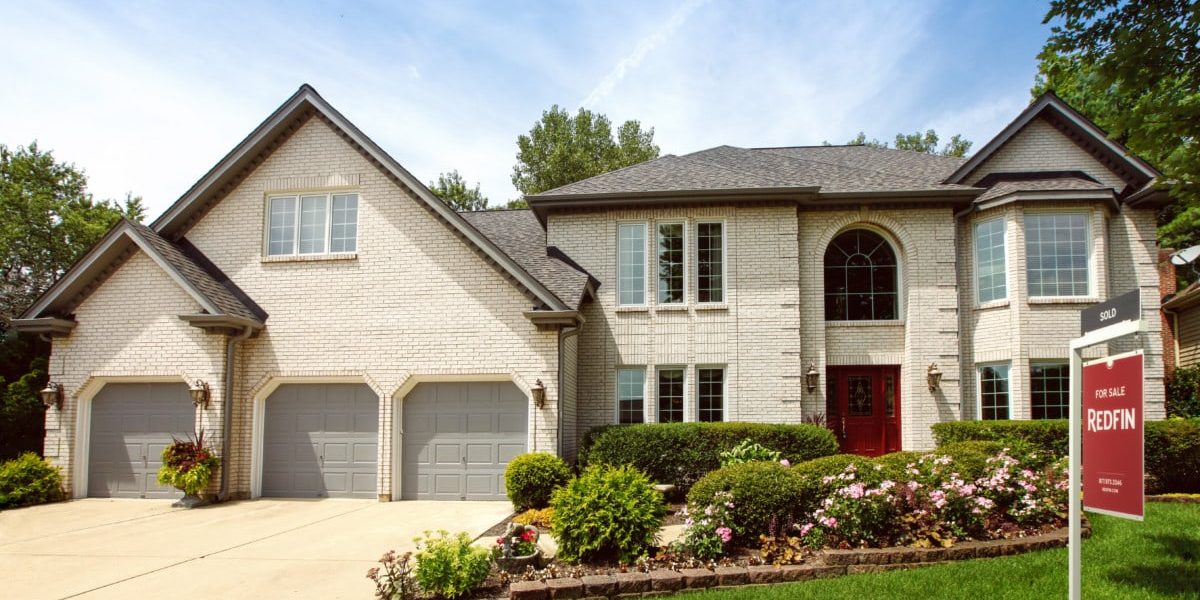Checklist for the Home Appraisal Process
An appraiser gathers information about your home to assess its current market value. Here’s your home appraisal checklist!

There are many important steps to buying or selling a house. One aspect that homebuyers and sellers often have questions about is the home appraisal process and how it impacts them in regards to the home sale. It’s important for both buyers and sellers to understand this process so that your home purchase, or sale, goes as smoothly as possible. Below we’ve included some home appraisal checklists for you to use and better understand the overall process.

What exactly is a home appraisal?
During a home appraisal process, a licensed, independent real estate appraiser gathers information about the house and surrounding property to give an estimate of its current market value. Most often, appraisals are ordered by the mortgage lender who is financing the mortgage for the buyer. The homebuyer typically pays for the appraisal either up-front or at the time of closing.
What happens during a home appraisal process?
During the home appraisal process, the appraiser makes a thorough inspection of the house, inside and which usually takes about 1 – 3 hours to complete depending on the size of the house and property. They measure each room and the lot the property sits on while photographing each room and the exterior of the home. They will then write up their report and submit it to the lender between 7 – 10 days, but how long the appraisal takes depends on the housing market is in your area. The home appraiser will first look at:
- Any signs of safety and health hazards
- The physical condition of the home (paint, roof, fencing, etc.)
- The structural integrity of the home
- Upgrades or improvements (new cabinets, countertops, flooring)
- Visible defects (foggy windows, holes in the wall or floor)
- Any conditions set by the lender
If appraisers have concerns about any of these items, they may order a specific inspection to determine the problem’s scope. Below is a more detailed checklist of what a home appraiser may look at both inside and outside the home.
Exterior Home Appraisal Checklist
- Total acreage or land area of the property, to ensure actual measurements match the property description
- Condition of the foundation and roof
- Condition of the chimney
- Curb appeal
- Quality of the landscaping (trimmed bushes, mowed lawn)
- Condition and type of driveway surface
- Type and condition of the garage
- Condition of the pool and other exterior amenities
Interior Home Appraisal Checklist
- Amount of livable space, and number of bedrooms and bathrooms to ensure these numbers match the property description
- The functional condition of the HVAC system
- Any built-in appliance upgrades
- Any peeling paint if the house was built before 1979 to ensure compliance with lead-based paint laws
- Type of basement or crawl space
- Quality and condition of the plumbing and electrical systems
- Material and conditions of the windows, floors, and walls
- Evidence of pests or termites
- Energy-efficient features
- Permanent upgrades (home addition, kitchen island, built-in shelves)
- General upkeep of the home
The home’s square footage does not typically include garages and basements unless these spaces have a closet and egress window, which allows them to be counted as a bedroom or liveable space.
Loan specific home appraisals
Depending on the type of home loan you’re approved for, your loan may have additional or specific requirements that may be on the home appraiser’s checklist.
FHA Home Appraisal Checklist
FHA appraisals are a little different and have special requirements. The biggest difference is that any repairs issue found during the inspection must be completed before closing. This requirement affects both the buyer and the seller because the home loan process absolutely cannot progress until these repairs are completed. An FHA appraisal checks:
- Exposed wall studs or floorboards
- Peeling or chipped paint, especially lead-based paint in homes built before 1979, must be scraped and painted
- Water damage caused by leaks in the foundation, plumbing, or roof
- Holes in the siding or roof, which must be repaired
- Sidewalk or driveway damage, which must be corrected
- Any outlets within 10 feet of a water source, which must be replaced with GFCI outlets
- Any exterior outlets must be grounded plugs or GFCI outlets designed for bathrooms, kitchens, and garages
VA Home Appraisal Checklist
VA home appraisal inspections have their own set of standards for acceptable home conditions, which include:
- A water heater, clean drinking water, and a sewage system
- Working electricity and HVAC
- A sound foundation
- Sound roofing
- A termite and pest inspection
- Appropriate living spaces, including the kitchen, living room, and bedrooms
Any safety or health concerns or needed repairs will slow down and possibly stop the closing process until the buyer or seller fixes them. Additionally, a VA-certified appraiser assigned by the Department of Veterans Affairs must complete the home appraisal for a VA loan.
This is not a complete checklist of what a home appraiser will look for in the home. However, it is a list of the most common issues that may arise. When sellers make repairs and upgrades before the appraisal inspection, they are better equipped for a smooth sale.
Once the appraiser has all the information they need, they write up their findings on a form called the Uniform Residential Appraisal Report, and the completed report is then sent to the buyer’s lender for the next steps in finalizing the loan amount.

What type of information is on the home appraisal report?
- Subject: In this portion of the form, basic information is shown such as the address of the property to be appraised, who the borrower is, who currently owns the house, what the real estate taxes are for the home, who the lender is, and whether or not the house has been up for sale within the past twelve months.
- Contract: This section of the report states whether the appraiser analyzed the sales contract. It also states the contract price and the date the contract was executed along with information describing any sales concessions being paid on behalf of the borrower.
- Neighborhood: A description of the neighborhood along with housing market conditions and neighborhood boundaries is shown in this section. Characteristics of the neighborhood such as urban, suburban, or rural are described, and the appraiser states whether the values of other homes in the area are increasing, stable, or decreasing in value.
- Site: The Site section describes the land the property is on. In this section, you’ll find the site’s dimensions, shape, view, and whether it conforms to current zoning. Also included is information about the utilities that service the house, whether those utilities are public or private, and if that is typical for the area. Finally, the appraiser comments on any adverse site conditions, such as soil or ground conditions.
- Improvements: In this portion of the appraisal, the appraiser gives a general description of the property, including the condition of the foundation, the exterior, and the interior of the house. The garage and driveway surface, the attic, the appliances, the fireplace, and the porch and deck are also included under Improvements. This is where the appraiser states the square footage of the house, describes any additional features of note, gives an overall description of the property’s condition, whether any physical deficiencies were noted, and states if the property conforms to the neighborhood.
- Sales Comparison Approach: The Sales Comparison Approach section of the home appraisal process is where the appraiser arrives at a value and substantiates the value of the house being appraised. This is done by locating comps, also known as comparable properties. Comps are houses that are as close as possible in structure and features to the house being appraised. When locating comps, appraisers also take into consideration properties close in physical proximity and if they were sold within the last year. The appraiser gives a detailed description of each comp, including address, selling price, square footage, and features, among other things. They use this information to arrive at a market value for your property.
- Reconciliation: In the Reconciliation portion of the appraisal, the appraiser states what the appraised value of the property is, and whether this value is made “as is” or subject to any necessary repairs.
- Additional Comments: In this section of the appraisal, the appraiser can write any additional information to help support the market value they arrive at. They can also write any important information that wasn’t included elsewhere on the appraisal form.
- Cost Approach: This is a type of home valuation method that appraisers often use when appraising a newly built home. It is the cost of land plus the cost of construction, minus any depreciation.
- Income Approach: The Income Approach to evaluating a property is primarily used when appraising apartment buildings, offices, and condominiums, or any other property that generates income.
- PUD Information: This section deals with establishing an appraised value for a PUD home or, a home located within a Planned Unit Development. PUDs are neighborhoods with a master plan that are single-family homes or attached homes. In a PUD, the homeowner owns the home and the ground beneath it. Whereas with a condo, the owner only owns the interior walls and space within those walls.

An appraiser gathers information about your home to assess its current market value. Here’s your home appraisal checklist!
Checklist for the Home Appraisal Process
Our Facebook Page On The Go Appraisals
call us: +1 833-219-9001
Write us: claims@otgappraisals.com
website: https://otgappraisals.com/




